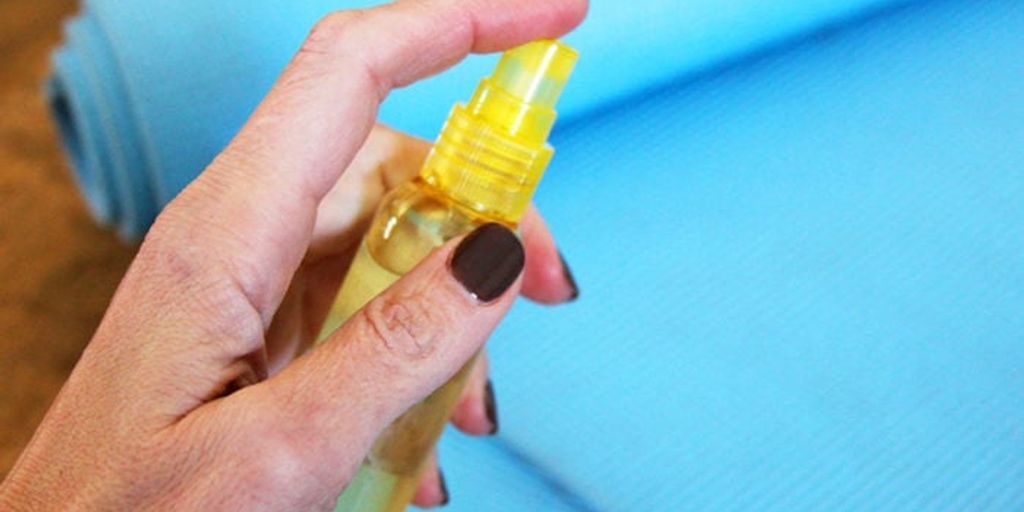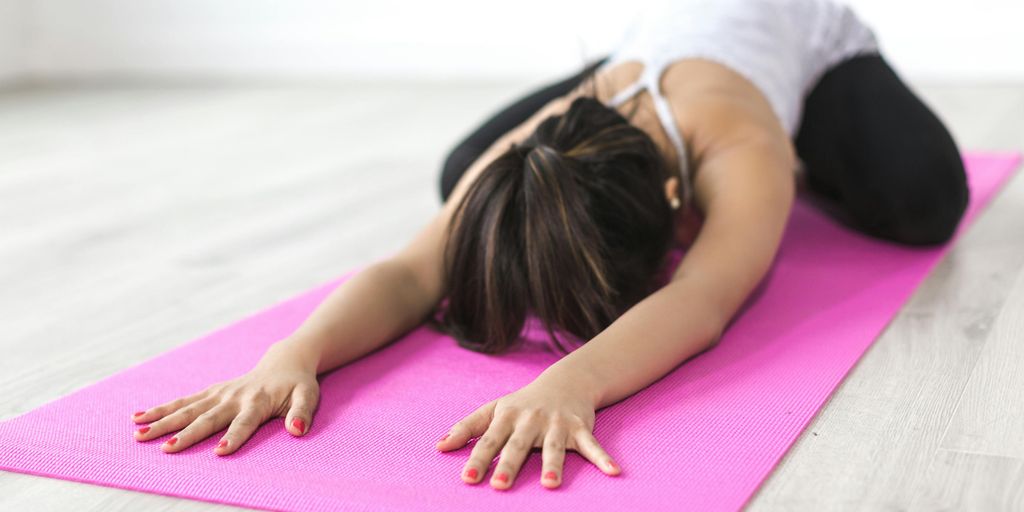
How to Effectively Clean Your Yoga Mat: A Step-by-Step Guide
Keeping your yoga mat clean is essential for maintaining hygiene and ensuring a pleasant practice experience. Whether you're a seasoned yogi or just starting out, understanding how to effectively clean your yoga mat can prolong its life and provide a healthier environment for your practice. This step-by-step guide will walk you through the best practices and techniques for cleaning your yoga mat, from choosing the right cleaning solution to maintaining it between cleanings.
Key Takeaways
- Choosing the right cleaning solution is crucial for effectively cleaning your yoga mat without damaging it.
- Preparing your yoga mat properly before cleaning can make the process more efficient and thorough.
- Deep cleaning techniques vary based on the material of your yoga mat and the level of cleaning required.
- Maintaining your yoga mat between cleanings can significantly extend its lifespan and keep it hygienic.
- Eco-friendly cleaning practices not only benefit your yoga mat but also the environment.
Choosing the Right Cleaning Solution
When it comes to cleaning your yoga mat, selecting the appropriate cleaning solution is crucial. Using the right cleaner ensures that your mat remains in good condition and free from harmful bacteria.
Natural Cleaners for Yoga Mats
Natural cleaners are a great option for those who prefer eco-friendly solutions. Ingredients like water, white vinegar, and essential oils can be used to create an effective cleaner. These natural solutions are gentle on your mat and the environment.
Commercial Yoga Mat Cleaners
There are many commercial yoga mat cleaners available on the market. These products are specifically designed to clean and disinfect yoga mats. They often come in convenient spray bottles and are easy to use. Make sure to choose a cleaner that is suitable for the material of your yoga mat.
DIY Cleaning Solutions
Creating your own yoga mat cleaner can be both cost-effective and environmentally friendly. Mix simple household ingredients like water, white vinegar, and a few drops of essential oil to make a powerful cleaning solution. This DIY approach allows you to control the ingredients and avoid harsh chemicals.
Preparing Your Yoga Mat for Cleaning
Unrolling and Inspecting the Mat
Before you start cleaning, unroll your yoga mat and lay it flat on a clean surface. Inspect the mat for any visible dirt, stains, or damage. This step ensures you identify areas that need special attention.
Gathering Cleaning Supplies
Gather all necessary cleaning supplies before you begin. You will need:
- A soft cloth or sponge
- Mild detergent or a specialized yoga mat cleaner
- A spray bottle filled with water
- A clean towel for drying
Having everything at hand will make the cleaning process more efficient.
Spot Cleaning Stubborn Stains
For stubborn stains, apply a small amount of mild detergent directly to the spot. Use a soft cloth to gently scrub the area in a circular motion. Rinse with a damp cloth to remove any soap residue. Spot cleaning helps maintain the overall cleanliness of your mat without soaking it entirely.
Proper preparation is key to an effective cleaning routine. Taking the time to inspect and gather supplies will make the process smoother and more efficient.
Deep Cleaning Techniques for Yoga Mats
Hand Washing Your Yoga Mat
To hand wash your yoga mat, fill a bathtub or large basin with warm water and add a few drops of mild soap. Submerge the mat and gently scrub it with a soft cloth or sponge. Rinse thoroughly to remove all soap residue and hang it to dry.
Using a Washing Machine
Some yoga mats are machine washable. Check the manufacturer's instructions to ensure your mat is suitable for machine washing. Use a gentle cycle with cold water and mild detergent. Avoid using a dryer; instead, air dry the mat to prevent damage.
Drying Your Yoga Mat Properly
After washing, it's crucial to dry your yoga mat properly to prevent mold and mildew. Lay the mat flat on a clean, dry surface or hang it over a shower rod. Ensure both sides are completely dry before rolling it up for storage.
Regularly wash your yoga mat with mild soap, water, and towel to prevent bacteria, maintain longevity, and improve practice.
Maintaining Your Yoga Mat Between Cleanings
Daily Wipe Down Routine
To keep your yoga mat in top condition, it's essential to incorporate a daily wipe down routine. Use a gentle, natural cleaner or a mixture of water and mild soap to wipe down your mat after each session. This helps remove sweat, dirt, and oils that can accumulate and cause wear over time.
Storing Your Yoga Mat Correctly
Proper storage of your yoga mat can significantly extend its lifespan. Always roll your mat with the top side facing out to prevent curling edges. Store it in a cool, dry place away from direct sunlight, which can degrade the material. If possible, use a yoga mat bag to protect it from dust and damage.
Using a Yoga Mat Towel
A yoga mat towel can be a great addition to your practice, especially if you sweat a lot. Place the towel on top of your mat to absorb moisture and provide extra grip. This not only keeps your mat cleaner but also enhances your practice by preventing slips.
Regular maintenance of your yoga mat not only ensures its longevity but also provides a cleaner, more enjoyable practice environment.
Addressing Common Yoga Mat Cleaning Issues
Removing Odors from Your Yoga Mat
Persistent odors can be a common issue with yoga mats, especially after intense sessions. To tackle this, use a mixture of water and white vinegar. Spray the solution evenly and let it sit for a few minutes before wiping it off with a clean cloth. For a refreshing scent, add a few drops of essential oils like lavender or tea tree oil.
Dealing with Sweat and Bacteria
Sweat and bacteria can accumulate on your yoga mat, leading to unpleasant smells and potential skin issues. To combat this, regularly clean your mat with an antibacterial solution. Ensure you allow the mat to dry completely before rolling it up to prevent bacterial growth.
Preventing Mold and Mildew
Mold and mildew can develop if your yoga mat is stored in a damp environment. To prevent this, always dry your mat thoroughly after cleaning. Store it in a cool, dry place and avoid leaving it in your car or other humid areas.
Regular maintenance and proper storage are key to extending the life of your yoga mat and keeping it hygienic.
Eco-Friendly Cleaning Practices for Yoga Mats
Using Biodegradable Cleaners
When choosing a cleaning solution for your yoga mat, opt for biodegradable cleaners. These products break down naturally and do not harm the environment. Look for labels that indicate the cleaner is eco-friendly and free from harsh chemicals.
Reducing Water Usage
Conserving water is crucial when cleaning your yoga mat. Instead of soaking the mat, use a damp cloth to wipe it down. This method not only saves water but also prevents the mat from becoming overly saturated, which can lead to mold growth.
Recycling Old Yoga Mats
When your yoga mat reaches the end of its life, consider recycling it. Many companies offer recycling programs specifically for yoga mats. Alternatively, you can repurpose your old mat for other uses, such as padding for kneeling during gardening or as a non-slip surface for pet dishes.
By adopting eco-friendly cleaning practices, you contribute to a healthier planet while maintaining a clean and hygienic yoga mat.
Maintaining a clean yoga mat is essential for a healthy practice. Discover eco-friendly cleaning practices that are gentle on your mat and the environment. For more tips and to explore our range of sustainable yoga products, visit our website today!
Conclusion
Maintaining a clean yoga mat is essential for both your health and the longevity of your mat. By following the step-by-step guide outlined in this article, you can ensure that your mat remains free from dirt, sweat, and bacteria, providing you with a safe and comfortable surface for your practice. Regular cleaning not only enhances your yoga experience but also promotes a more hygienic environment. Remember, a clean mat contributes to a clear mind and a more focused practice. Happy cleaning and namaste!
Frequently Asked Questions
How often should I clean my yoga mat?
It's recommended to clean your yoga mat after every few uses, especially if you practice regularly. A deep clean once a month can help maintain its condition.
Can I use vinegar to clean my yoga mat?
Yes, a mixture of water and white vinegar can be an effective natural cleaner for yoga mats. Just be sure to rinse thoroughly and let it dry completely.
Is it safe to put my yoga mat in the washing machine?
Some yoga mats are machine washable, but it's important to check the manufacturer's instructions. Use a gentle cycle and avoid harsh detergents.
How do I remove odors from my yoga mat?
Sprinkle baking soda on the mat, let it sit for a few minutes, then wipe it off with a damp cloth. You can also use a mixture of water and essential oils.
What should I do if my yoga mat gets moldy?
Clean the mat with a mixture of water and tea tree oil, which has natural antifungal properties. Ensure the mat is completely dry before rolling it up.
Can I use disinfectant wipes on my yoga mat?
While disinfectant wipes can be used, they may contain chemicals that can degrade the mat material over time. It's better to use cleaners specifically designed for yoga mats.


